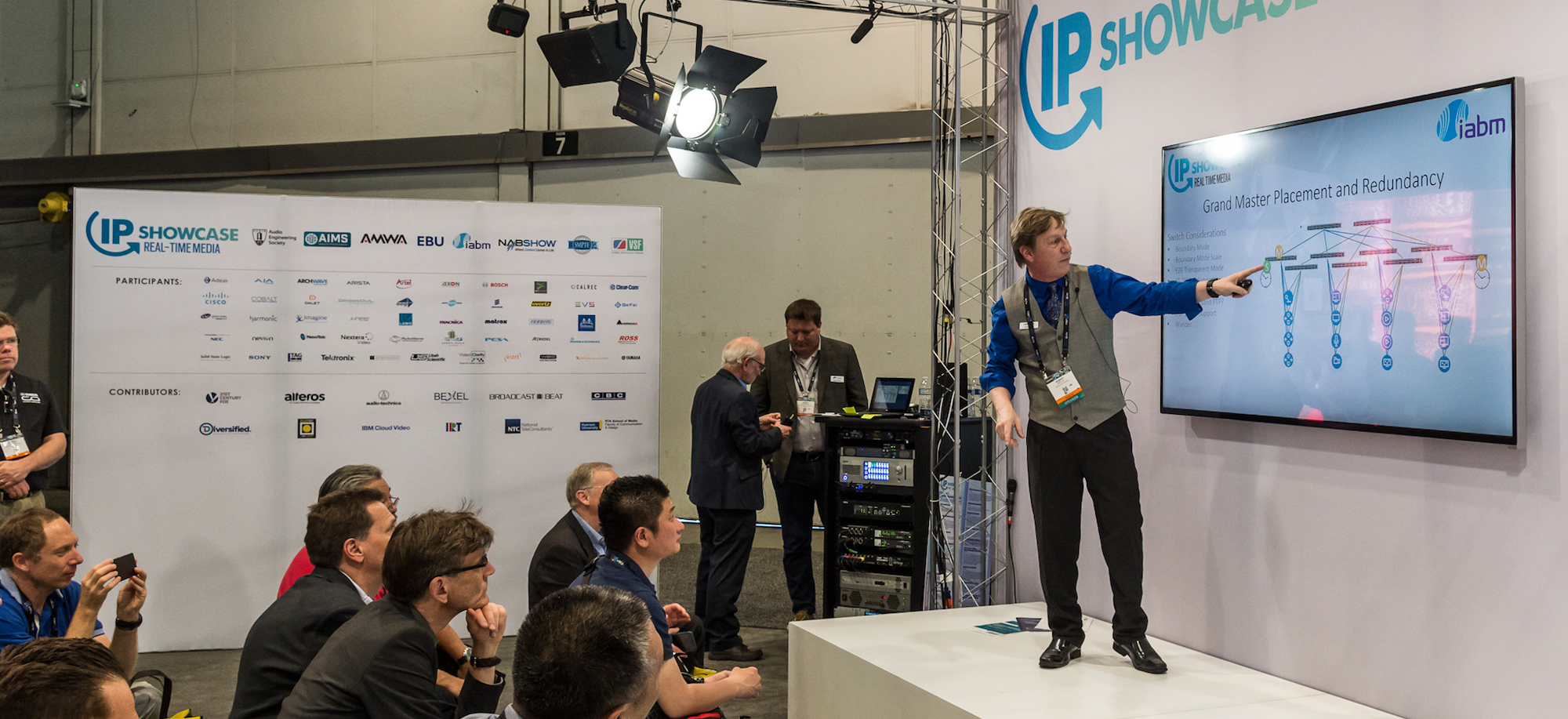New Cloud Solutions Abound at 2022 NAB Show
What to look out for when shopping for cloud production solutions at the show

LAS VEGAS—Even before COVID-19 forced so many changes, cloud adoption was rapidly expanding especially across media and entertainment and the broadcast industries. Many new workflows and products came forth while addressing the “COVID-impact.” So three years after the last show, you can expect NAB Show exhibitors to display a number of cloud-enabled products from playout, storage, and processing to the enablement of numerous “remote” production models centered around cloud and its capabilities.
Cloud planning, solutions and practices accelerated because our industry had to change the ways they create, produce, manage, publicize and monetize their workflows. Product and service providers will show new cloud capabilities for both their legacy systems and as new introductions.
Attendees can expect examples of what came from these myriad changes—those which occurred as a result of the pandemic and from natural technological growth. Flexibility and choices for cloud services are unparalleled, as are the expectations and resulting outcomes of a paradigm shift from CapEx to OpEx business practices.
Broadcasting from the Cloud
NAB attendees who are “shopping the cloud” for linear broadcast solutions or streaming services will see both recurring and new offerings, with playout methodologies firmly rooted and ready to roll.
“Cloud broadcasters” are a growing breed who ingest, move, process and distribute content solely within the cloud. While some are only experimenting, others have uprooted their capital expenditure practices in support of cloud services in new dimensions.
Cloud broadcasters are a growing breed who ingest, move, process and distribute content solely within the cloud.
Exclusive cloud broadcasting tames certain previously “tricky problems to solve,” irrespective of offerings from some traditional broadcast vendors. Yet the business benefits and the technological advances seen in the past decade are changing the landscape forever.
Complications from the varying number of steps required to produce and deliver content are now stabilized in cloud offerings; both content and resources now integrate into live shows, studio productions, news, sports, and advertising.
Get the TV Tech Newsletter
The professional video industry's #1 source for news, trends and product and tech information. Sign up below.
Streaming and video-on-demand have seen a growing adoption rate, especially in older age groups. Look for practical products that have raised advertising responses especially in subscription-based video on demand (SVOD). Advertising-based (AVOD) and transactional-based (TVOD) on-demand services are leveraging cloud-based distribution alongside the new premium (PVOD) services that can be rapidly spun up and augmented on the fly.
New ventures in pure, cloud-only services (aka “pure-play”) are taking the stage, changing the focus on VOD or unscheduled (live) streaming models of a decade ago back towards linear television—which some deemed as dead or dying. Look for many new faces in this competitive marketplace with those “technology-based cloud services” offered at NAB Show.
‘Pay as You Go' Adoption
Multi-tenant, linear channel management, which uses a true SaaS, microservices-based, cloud model for playout has entered the scene. Pioneering efforts to produce a software-as-a-service linear television management platform may be just the ticket for some media-content service providers or content owners. Cloud vendors are reducing the complexities of linear channel management, using services specifically designed to ease the tensions of producing, processing, or delivering linear channels.
“Pay-as-you-go,” as a self-service offering—which wraps select requirements into a user-configurable package—are growing in popularity and demand. Smaller organizations who want to “test the track” can explore opportunities that work without the hardware commitment, or the ground-based solutions typically employed in traditional playout mechanisms.
The process of assembling virtualized services into automated platforms is becoming well-oiled and tuned to run on-premises, a model well understood by those who manage or use datacenter-like facilities. Securely and easily migrating those workloads across a multicloud environment allows users to architect a system you can stand up once and run most anywhere. Such adoptions require support for containers, microservices, Dockers and/or Kubernetes—relatively new words to the television broadcast community, which NAB Show attendees should seek out and understand.
Simplification is key to the multicloud and multi-tenant domain. Consumption flexibility is what content management and distribution owners need. Incumbent with these new consumption and distribution models are cloud-centric services which users have been enjoying for some time. Now, as will be exemplified at the NAB Show by new playout offerings, are functions including data and content storage, backup/DR, and management services for both private and hybrid clouds.
When looking at new ways of ingest, playout or content processing services, be sure to include those sometimes independently offered services and see how they might evolve from your current on-prem systems to hybrid or fully-enabled cloud services.
Media asset management is firmly moving into the cloud, bringing new value with additions focused on unstructured data aimed primarily at media content.
Cloud implementations offer MAM solutions which embed responsiveness, agility, and the dynamic allocation of unstructured data assets in a managed form. MAM in the cloud is a system which can “plug-in” or “plug-out” services as needed, when needed, or only for those periods which a service “is” needed.
Microservices bring new values to the cloud MAM, so when exploring the aspects of asset management products at the show, ensure you’ve looked at the capabilities of a cloud-based product with a focus on understanding those junction points for MAM which allows users to select specifically needed services in whole or in part.
Educational Opportunities
The new structure of the NAB Show floor has been redesigned in a way that provides educational and demonstration platforms for each of the themed sections of the show itself. In particular, be sure to check out the Connected Media IP section in the new West Hall.

The Broadcast Engineering and IT Conference and SBE Ennes Workshop will return, offering numerous sessions covering cloud topics, and AIMS is bringing back its popular IP Showcase with sets of use cases and technology-focused presentations on changes in the media landscape regarding the migration to IP.
Safeguarding Remote Users
Security, including cyber attack prevention, encryption, conditional access and authentication, and zero trust should all be top of mind as visitors prepare their schedules and show floor tours. Many remain unclear or unsure whether the cloud actually provides the protection and safeguarding of the users, their content, and even their identities.
Public cloud offers a substantial set of protective measures; however, users who are considering packaged products offered by representatives should clearly understand how the “end-points’ in the systems (which leverage those public cloud services) actually ensure the safety, security, and protection they expect.
Remote users who routinely depend on connectivity between the main facility and their remote workplace or those who are seeking a better solution set will find many offerings at this year’s gathering. Those looking for complementary products which “virtually” extend systems from a central equipment space and utilize the cloud will be wise to explore how those systems perform “end-to-end” from a security posture, irrespective of whether accessing those capabilities from the company’s network or the cloud.
For more information about the 2022 NAB Show, April 23-27 in Las Vegas, visit nabshow.com/2022

Karl Paulsen recently retired as a CTO and has regularly contributed to TV Tech on topics related to media, networking, workflow, cloud and systemization for the media and entertainment industry. He is a SMPTE Fellow with more than 50 years of engineering and managerial experience in commercial TV and radio broadcasting. For over 25 years he has written on featured topics in TV Tech magazine—penning the magazine’s “Storage and Media Technologies” and “Cloudspotter’s Journal” columns.
